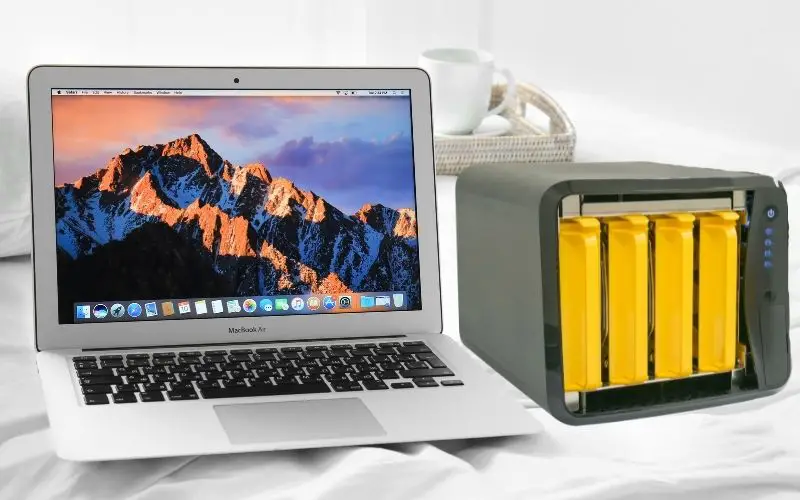Synology NAS systems are ideal for backing up Mac computers and related hardware, but that benefit is not widely known in the Mac world. The compatibility is designed and available, there’s no incredibly complicated engineering involved, and the process is extremely reliable both in protection as well as in recovery. So why aren’t more people using a Synology NAS or similar for redundancy protection? A lot of the reasons have to do with the culture of Apple, which teaches people to only look within the Mac universe and no more. Fortunately, there is a bigger world out there.
Why does a Synology NAS make more sense for Mac backup?
The specific method for backing up utilizes the Mac OS feature, Time Machine, to do all the hard work. How is it any different from just backing up on the Mac or a flash drive? Space, fundamentally, is the big advantage of the NAS. Unlike the Mac itself or simple flash storage, the Synology NAS can take a far greater amount of storage, including the primary backup package, other file storage unrelated to a backup, a media server if wanted, and far more. The same can’t be said when the Time Machine and basic OS take up two thirds of your Mac computer.
The method works by starting off with a shared folder created on the Synology NAS itself. This can be encrypted or just left as a normal folder, depending on your security interests. Then, within the Mac to be protected, the Time Machine feature is configured to save data on a scheduled basis and send it to the Synology NAS instead of an internal folder when the saving procedure executes. In a smooth fashion, one could create a recipient folder on the Mac that automatically syncs and distributes to the NAS shared folder whenever the Mac is connected.
Cross-platform support for super users using Synology
Further, if you’re the heavy computer type, chances are you’re the kind of user who flips back and forth between Mac and Windows OS, maybe even a true Linux setup in between on occasion. The Synology NAS set up provides one with the ability to work with all three OS resources and even more if desired. All one has to do is configure the NAS for the appropriate connection and sequence when hooked up. It’s an ideal way to centralize all of one’s storage and redundancy, regardless of the type of computer OS being used at the time. Synology works across the board, period. That’s not possible with other Mac-type redundancies, which are almost always restricted to just working with Mac hardware only.
Alternatively, one could instead opt for the Airport Time Capsule for ongoing backup. However, again, one runs into the same problem of being Mac-specific, and you lose the ability to work with multiple computers at the same time. Ironically, even though the Airport Time Capsule has less capability, it runs for the same price as a Synology NAS package. Clearly, the Synology NAS is the better choice for cross-platform demands, especially if you’re running a mini-network for your home or a small business office.
A not-so well-known storage secret about Synology
The interesting thing is that the Synology NAS approach is novel in the Mac world, which is intensely focused on Mac-only approaches to everything. If more people understood and knew about what a NAS could do for their storage needs, as well as enjoy more than one type of computer, NAS’s would be flying off the shelves. The Mac-only perspective might have worked 10 to 20 years ago, but today it’s simply not practical. Too much information is being shared online and digitally and being received by too many different platforms.
Assuming that all IT storage needs will be Mac-only is hamstringing one’s capabilities unnecessarily. Instead, with a Synology NAS storage system, a user can still enjoy the full use of a Mac computer while knowing anything else that comes down the pipeline will be compatible as well. It matches the reality of modern times.
Other interesting articles:

